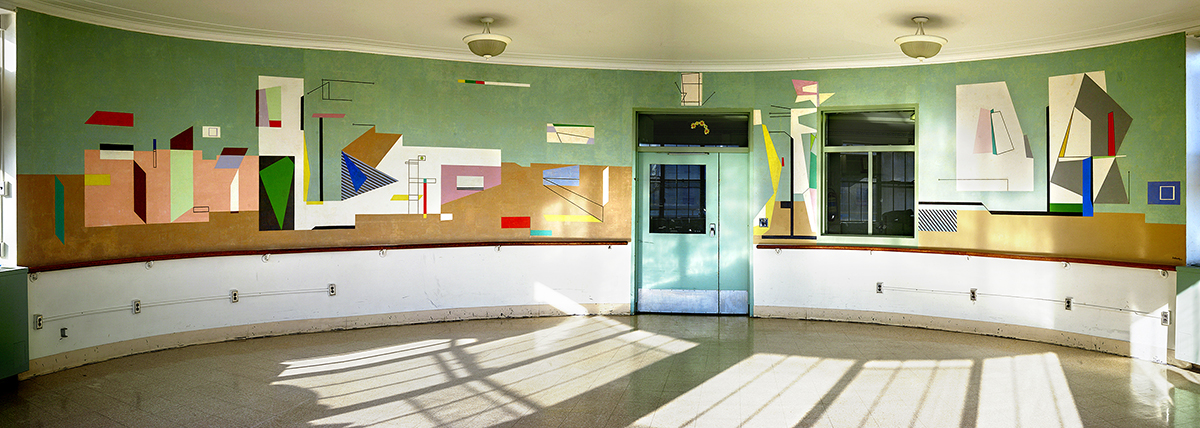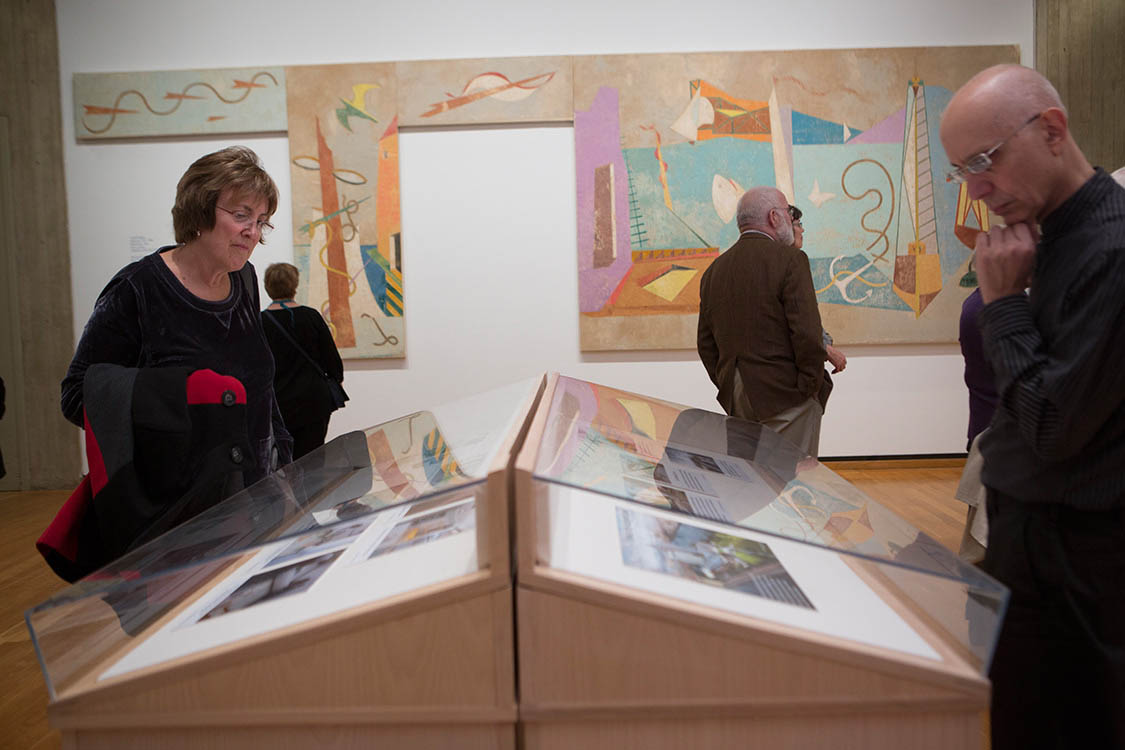Roosevelt Island hospital murals saved for Tech campus
By Daniel Aloi


The Herbert F. Johnson Museum of Art is hosting the first public display of portions of three abstract murals from Roosevelt Island’s Goldwater Memorial Hospital, which was demolished in 2015 to make way for the new Cornell Tech campus in New York City.
The murals, by Ilya Bolotowsky, Albert Swinden and Joseph Rugolo, were created in the early 1940s and later covered over by paint. Before the hospital came down they were located and removed for conservation. All three will have a home on the new campus, on the site where the hospital stood just south of the Queensboro/59th Street Bridge.
The artworks were commissioned by the Works Projects Administration’s (WPA) Federal Art Project in the early 1940s. As part of President Franklin D. Roosevelt’s New Deal, the WPA agency commissioned more than 200,000 works between 1935 and 1943, as a relief measure for artists and artisans who created art for municipal buildings and other public spaces.
“Abstraction in WPA art was so rare, and it was only in the New York City area they could slowly push to get this kind of art passed through; otherwise it was heroic or historical figures,” said exhibition curator Nancy Green, the museum’s Gale and Ira Drukier Curator of European and American Art, Prints and Drawings, 1800-1945.
Goldwater opened in 1939 as the Welfare Hospital for Chronic Disease (home to several hospitals, Roosevelt Island was known as Welfare Island from 1921 to 1971). The sprawling chronic care facility’s closure, announced in 2010, came at the end of 2013 after nearly 800 patients were relocated to other facilities.
Originally installed in Goldwater’s circular day rooms, the 7-by-50-foot murals were first painted over in 1957 and bore seven layers of paint by 1991, when the Municipal Art Society spearheaded an earlier restoration on Bolotowsky’s 1942 “Abstraction.”
The Swinden and Rugolo canvases were still covered by paint and had to be located in 2014 by conservators, who searched the hospital’s 32 circular day rooms, carefully scraping away paint with scalpels.
“With the pressure of getting these things out, the conservators had to move really fast,” said Stephanie Wiles, the Richard J. Schwartz Director of the Johnson Museum.
Affixed to the walls with paste containing lead, the murals were extremely heavy when they were rolled up and removed; conservators wore protective clothing and headlamps, due to hazardous materials and the building’s power having been turned off.
The Bolotowsky mural is slated for reinstallation in The Bloomberg Center – in honor of Emma and Georgina Bloomberg, Cornell Tech’s first academic building, opening in summer 2017. One percent of the building’s overall budget is dedicated to art, and the mural will be reinstalled in a circular room similar to the one it originally occupied in the hospital, Wiles said.
The Swinden and Rugolo murals will go into storage awaiting future buildings, she said.
The museum provided expertise, recommending conservators for the project, “helping them through a fairly complicated process of getting these things off the wall and out in time,” and working with the city’s Public Design Commission. “It was known all along that Cornell was going to protect these murals – technically they belong to the federal government, and the city gave us permission to bring them here,” Wiles said.
Conservation work continues on other mural sections while the Johnson shows the conserved pieces through May 29. “Revealed: WPA Murals from Roosevelt Island” includes information on the artists and the conservation process, and display cases featuring the hospital’s history and the new campus.
Also shown are proposed but unrealized WPA projects for Goldwater, and photos of another abstract work that was completed but later disappeared. The fate of this fourth mural, “Abstraction Based on Music” painted by Dane Chanase (1894-1975), remains a mystery.
“It’s really a shame, because it’s really fantastic,” Green said. “There’s tons of documentation of it, there are pictures of him doing it, but the supposition is that instead of just painting it over, at some point it was removed.”
Helen Im of Fine Arts Conservation Group, who worked on the Bolotowsky mural, will discuss the artwork and the conservation effort, March 10 at 5:15 p.m. in a free public lecture at the museum.
Media Contact
Get Cornell news delivered right to your inbox.
Subscribe